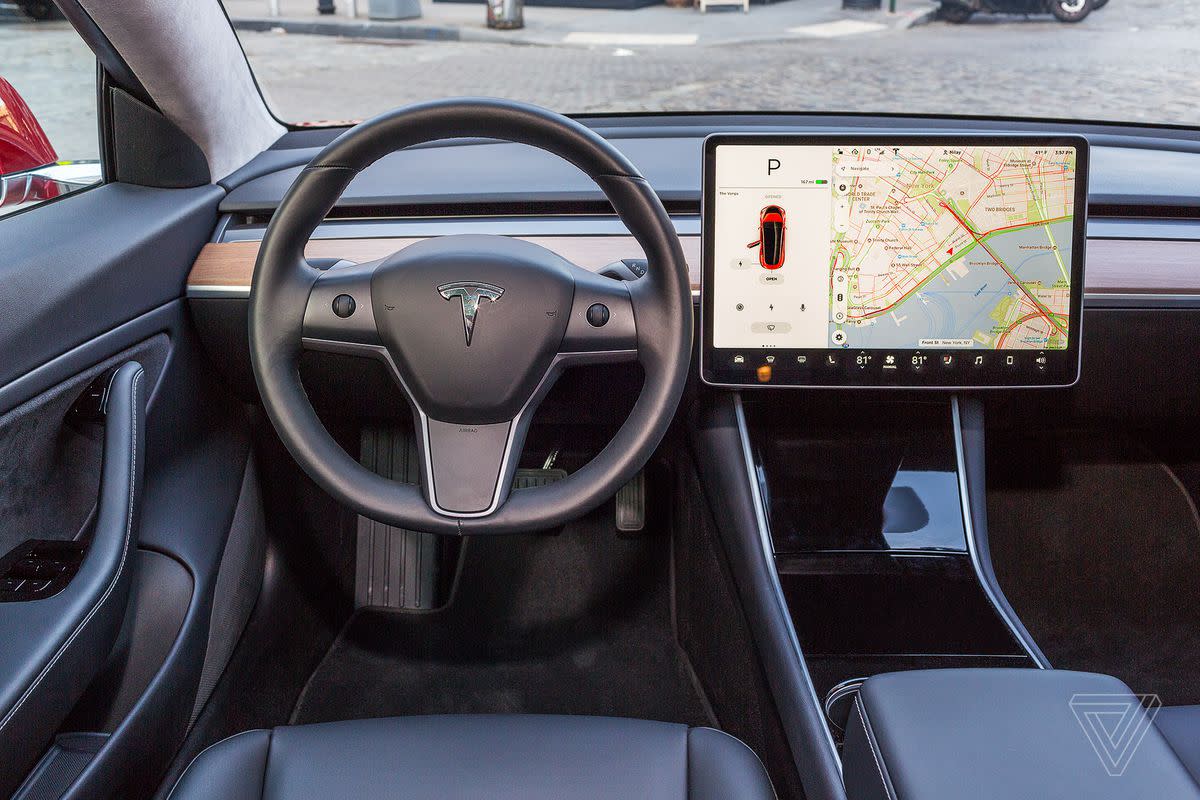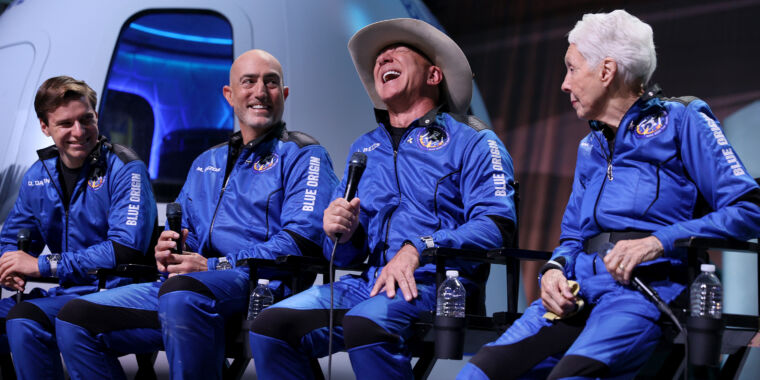floydboy
Member
TSLA is down but NKLA is up, on news that they may be patenting 'uphill' next.Don't even try.. most likely patented by NKLA already...
Last edited:
You can install our site as a web app on your iOS device by utilizing the Add to Home Screen feature in Safari. Please see this thread for more details on this.
Note: This feature may not be available in some browsers.
TSLA is down but NKLA is up, on news that they may be patenting 'uphill' next.Don't even try.. most likely patented by NKLA already...
Well, it would take around 300 panels getting full sun for one hour to output 100kWh.Do we have any figures on what area needs to be covered by solar panels per 100 kWh dispensed by a supercharger?
I'm assuming that whatever panels they can cram into a parking lot (on roofs over stalls or whatever) are going to be pretty insignificant compared to the energy dispensed on a daily basis. I feel like I heard a car or CyberTruck covered in solar could get like 30 miles a day (8-10 kWh?), so even if there's 10x that many panels on-site, it covers maybe 2 charges daily. Not nothing, but not free charging either.
As such, I'm assuming that if Tesla wanted to supply superchargers with "free" energy to dispense, they'd need to be building solar farms. And I haven't seen them doing that.
I'm not exactly sure why -- with billions in the bank you'd think it would be a sensible investment to power the supercharger network.
Maybe batteries are the start so at least they can time-shift off-peak energy rates, and once the batteries are in place then solar makes more sense? And then cell constraints would be stalling this whole idea?
| SOLAR SIZE | NUMBER OF PANELS | POWER RATING | ROOF AREA COVERED |
|---|---|---|---|
| Small | 12 | 4.08 kW | 240 sqft |
| Medium | 24 | 8.16 kW | 480 sqft |
| Large | 36 | 12.24 kW | 720 sqft |
| X-Large | 48 | 16.32 kW | 960 sqft |
Maybe batteries are the start so at least they can time-shift off-peak energy rates, and once the batteries are in place then solar makes more sense? And then cell constraints would be stalling this whole idea?

 www.renewableenergyworld.com
www.renewableenergyworld.com
The issue is that you just can't throw money at it. There are permits, property owner permissions, utility considerations, and a host of other things to retrofit existing sites. New sites may be even harder with the government funded charging sites that may be coming. Property owners are likely to wait to see whether Tesla will pay more than the government before deciding.Do we have any figures on what area needs to be covered by solar panels per 100 kWh dispensed by a supercharger?
I'm assuming that whatever panels they can cram into a parking lot (on roofs over stalls or whatever) are going to be pretty insignificant compared to the energy dispensed on a daily basis. I feel like I heard a car or CyberTruck covered in solar could get like 30 miles a day (8-10 kWh?), so even if there's 10x that many panels on-site, it covers maybe 2 charges daily. Not nothing, but not free charging either.
As such, I'm assuming that if Tesla wanted to supply superchargers with "free" energy to dispense, they'd need to be building solar farms. And I haven't seen them doing that.
I'm not exactly sure why -- with billions in the bank you'd think it would be a sensible investment to power the supercharger network.
Maybe batteries are the start so at least they can time-shift off-peak energy rates, and once the batteries are in place then solar makes more sense? And then cell constraints would be stalling this whole idea?
I'd suggest that this spoke well of the salesperson. Better to admit you don't know something than to give a customer incorrect information.3) the salesperson actually chose to ask a long term customer rather than speculating.
Progress on turning Maxwell's dry battery electrode tech into volume production:
Plus the “Powered by Tesla” bumper stickers!So does anyone think that other manufacturers are really going to have their navigation systems route the cars through Tesla SuperChargers?
Tesla SuperCharger and Tesla SuperCharger app will the first real advertising Tesla does and they will get paid for it. Paid with an adapter, paid with the charging fees and paid with pushing Tesla energy and Tesla cars in the app.
Yeah I love the idea, but outside of wishing for a stock explosion, don’t know what makes it so great.Great article from thestreet

Tesla Software Defies Critics
Shares ready to roll as full self-driving capability shocks pessimistswww.thestreet.com
Lets assume your premise that non-OEM CharIN members are driving the CharIN position (as stated in their position paper) on adapters for the reasons you describe. They have no objection to a CCS charger to Tesla connector adapter. There is nothing unique to that adapter the prevents it from being affected by all of the things CharIN sites regarding the danger of adapters: there were no standards for such adapters that Tesla designed to, there are no CharIN approved tests it has passed, there can be differences between the grounding schemes of the Tesla vehicle and the CSS charger, etc.... Those who imagine that the other members are trying to impede Tesla are dabbling with conspiracy theories.
The CCS standards were driven more by electrical suppliers and utility providers than by OEM members. That is why they're cumbersome and sometimes arcane. In context, understand that equipment providers and utilities are obsessed with electric transmission safety. For that reason, and only that reason, adapters are discouraged unless they provide unusual safety coupled with complying with communication standards...
This would mean that all the outstanding notes are paid for.In case there are others like me who don't really understand what impact redeeming the bonds early has...
This means Tesla will pay $1.8477 billion, or almost $48 million over the face amount to redeem these bonds. Of course, it is saving $95.4 million in interest per year over the next four years, so this redemption makes economic sense, particularly considering Tesla currently has significant cash on its balance sheet.
Interesting hypothesis. A counterargument is that Tesla will not stop building factories and hiring new employees for the next decade at least. There's a long way to go from ~1M vehicle deliveries this year to 20M+ in 2030 (not to mention Tesla's other products, known and currently unknown).
Because of this enormous growth, the stock will have lots of upside even after it pops to the 900s and 1000s. Future employees will have lots of financial incentive, even if hired much higher on the S curve of this historic company.
So if Tesla isn't done perfecting the dry electrode process, does that mean 4680 aren't scaling? Or does that mean it's just a slower process?

As such, I'm assuming that if Tesla wanted to supply superchargers with "free" energy to dispense, they'd need to be building solar farms. And I haven't seen them doing that.
Sure, technically it is not a requirement. However, the dry electrode process is the one that saves very significant cell-factory footprint (don't remember the figure from battery-day presentation but it was large portion, over 3/4 of space saving) and it is also a significant cost saving factor (no need for the energy intensive drying ovens). So if they want to achieve very large scale cell production in a small footprint and at low cost, they need the dry-electrode process to be operational at mass-production factory-scale.I'm guessing it means they can build 4680 w/o needing the dry electrode process. Maybe dry electrode is an optimization, not a requirement.


